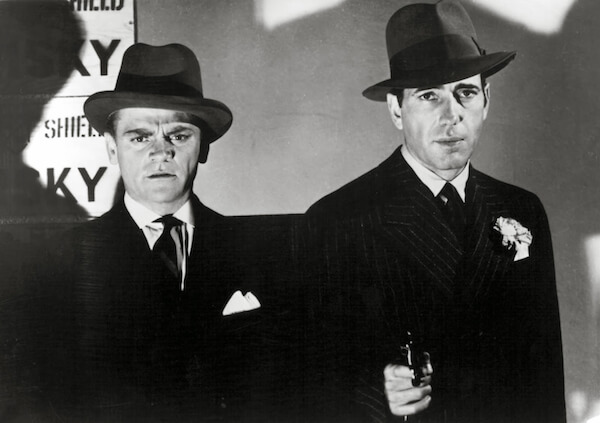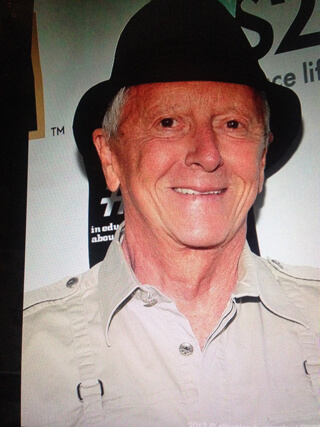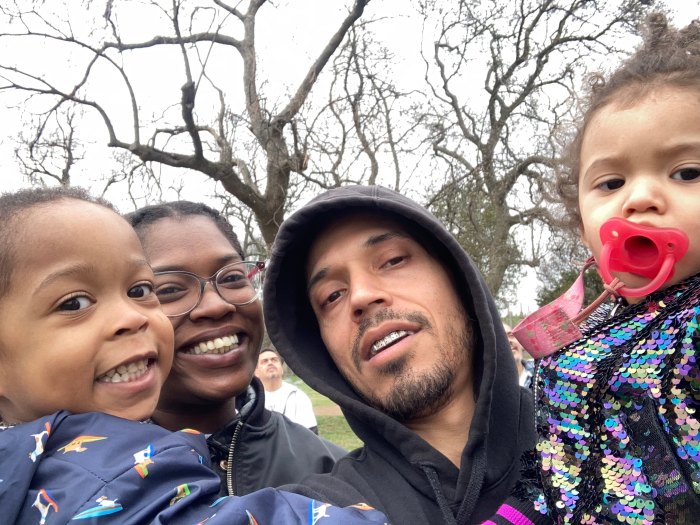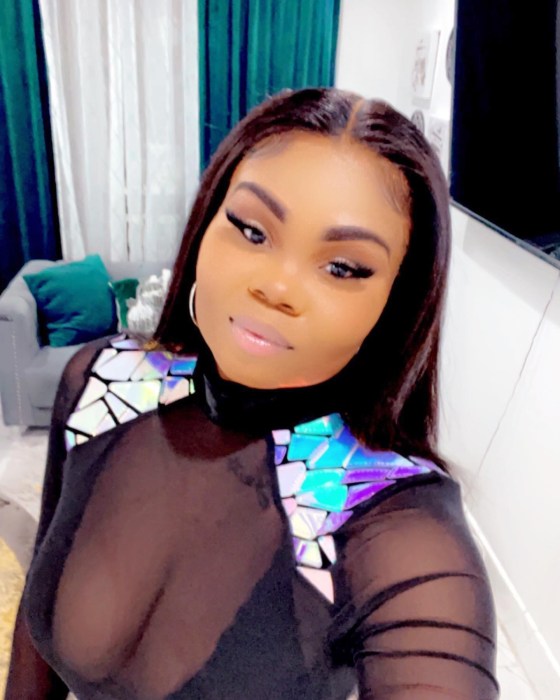BY DAVID NOH | Christina Crawford disdains it, Faye Dunaway won’t talk about it, Diana Scarwid and Mara Hobel aren’t saying anything, so what a blessing it was to encounter the delightfully outspoken Rutanya Alda, who is truly our link to the Holy Grail of gay cult movies, “Mommie Dearest.” Alda, who played Joan Crawford’s lifelong slave, Carol Ann, lives in New York and is appearing in Sarah Levine Simon’s play “The Portrait” at Theater 54 (244 W. 54th, 12th fl., through Jan. 26; smarttix.com).
“I’m the maid to an Upper Park Avenue woman in this farce, set in the 1980s,” she told me. “It’s just delightful, a comedy of bad manners, and definitely a satire on the theme of appearing better than you are and putting down people. Everybody wants to be top dog, which you see around the wealthy.”
Rutanya Alda on “Mommie Dearest” and more; singing/ dancing cinema the way it should be seen
Alda came from Latvia as a child after World War II, a refugee who had been living with her mother and grandmother in a displaced person camp in Germany before being accepted by America.
“My father was sent to the gulag for 16 years and we didn’t know he was alive until we were reunited in my 20s, which I am writing about in the one-woman show I’m preparing.”
Character actor Richard Bright was Alda’s husband of 30 years when he was killed on Columbus Avenue, hit by an Academy bus in 2006.
“It was terrible –– you just have to go through the agony and horror of it,” she said. “And we haven’t yet received any compensation. They wear you out with lawsuits. They don’t value human life, what they put us through in terms of reliving it and interrogation was just disgusting. My husband was in his 60s and they said, ‘Well, he was older,’ so his life is valued less. And they said, ‘We think he died right away, so he had no pain or suffering and we only pay on that, not on death.’ We’re not dropping the suit, but they are stretching it beyond, probably hoping I die [laughs].”
Alda, who went to work when she was 12, wanted to be an actress from the time she saw Cecil B. DeMille’s film “North West Mounted Police.” She came to New York, where she studied with all the great acting gurus of the time, including Barbara Loden (then married to Elia Kazan), with whom she became best friends. Her early screen credits include some of my favorite films: “Next Stop, Greenwich Village” –– as a party guest with John Belushi in a scene that was largely cut –– Brian DePalma’s horror masterpiece “The Fury,” and Robert Altman’s “The Long Goodbye,” as Elliott Gould’s sexy, yoga-practicing hippie neighbor (“Mr. Marlowe, you want a brownie?”).
But, of course, it was “Mommie” that I wanted to hear all about, the film that, with endless revivals, simply refuses to die. For many gay men like me, certain snatches of its dialogue run on an endless loop in our minds, absurdly yet uncannily applicable to so many real life situations.
“Isn’t it wonderful… for me?” Alda said, laughing. “I think it is a wonderful film, too, in many ways. But isn’t it sad that Faye can’t appreciate it? It’s totally different from anything she’s ever done and I love her in it. It’s terrible that she can’t say, ‘Thank you, yes, I did a great job,’ and accept it.”
The movie is the colossal elephant in the room for anyone meeting Dunaway, but, said Alda, “You’ll hear all about it from my side. I have a book coming out, based on the diary I kept during its making. I’d never kept one before or since, but it was because my personal life was in chaos at the time, as was our set, because Faye was so difficult. It was my way of keeping a balance in my life and I felt better after journaling it.
“I put it away and didn’t think about it until last summer when I was invited for a screening at the Castro Theater in San Francisco. Eighteen hundred seats sold out and I brought the diary to read little portions of it because I thought people might be interested. Well, it was phenomenal! I’ve never experienced this kind of love: people were so loving and excited. I thought, ‘Wow, I should really publish this!
“You can put this on record: Faye made life very difficult. [Costume designer] Irene Sharaff, who had come out of retirement to do it, said, ‘That woman is on cocaine!’ She walked off the film midway and said, ‘I’m going back to New York and not returning, because of Faye. I have never walked off a movie in my entire career… You can enter Faye Dunaway’s dressing room, but first throw a raw steak in there to distract her.’ I never saw any drug use, but I saw the erratic behavior and mood swings, which happen for a reason.
“My first day on the set with her, she did the upstage routine where she made sure that my face was not on camera, an old theater trick. I couldn’t believe it –– she’s the star! I couldn’t complain to our director Frank Perry, a sweet man who’d lost control of his set, so I decided to help her upstage me. I upstaged myself all day long, and then she kind of relaxed. So, after that she was a little more gentle with me, but I also learned to get out of the way and hide a lot [laughs]. I’m sure if I stayed around long enough I’d be under fire, too. She has that tremendous insecurity where everyone’s competition when you’re the star.”
I had to hear about the scene where she savagely attacked Diana Scarwid, playing daughter Christina: “Very intense. They used stunt doubles for that, but then Faye would come in and scream over Diana’s body, and I did get knocked down by her when she really hit me in the chest. She was all over the map, and Jocelyn Brando, who played the journalist, was really scared because she’d been in a horrible auto accident and had a plate in her arm.
“When she saw me go down after Faye hit me, she said, ‘I can’t afford to be injured, just spent six months in the hospital.’ Initially, Frank wanted both me and Jocelyn to pull her off Diana, but she saw Faye was out of control and said, ‘No way.’ We did maybe 10 takes and Frank had to deal with it because Faye wasn’t goanna change what she was doing. I got knocked down maybe twice –– she hit me hard in the chest.”
Then there was the slapping scene: “She didn’t pull it, either [laughs]. But it was only once that she really slapped me out of the five takes we did. Frank said, ‘Wait a minute. If you do that all the time, the mark you leave on her cheek isn’t going to match.’ That was the only reason [laughs]! Otherwise, I would have been slapped more!
“Diana Scarwid was very unhappy. Faye didn’t like her at all, and vice-versa. I kept telling Diana, ‘Just use what you’re really feeling about Faye,’ and it worked because that was probably what was happening with Christina. Diana’s a wonderful actress and a lovely, sweet woman.
“Wasn’t Mara Hobel wonderful [as little Christina]? When I first met her, I thought she was 40 years old because she was questioning me, like ‘Who’s your agent? How many films have you done? How long are you goanna be on the film, how many days do you have?’ Ohmigod, who is this person talking like an agent? But she was really delightful, very spunky.
“The filmmakers really captured that 1940s era, you felt you were really in that time and place so I was really happy most of the time. But I did hide a lot because if you didn’t, Faye would pick on you. Beyond difficult, but crazy like a fox. She needs to be the star and if anybody else gets attention, they’re in trouble. And it’s difficult for women, who have been stars, to age. At the time, Faye said she would never have a facelift and of course she’s had more than one, her face is so stretched, with those lips. I have a hard time looking at her now because it’s so distorted to me. If she’d just let herself go, she would have been a beautiful older woman and could have played parts like June Squibb in ‘Nebraska.’”
Alda’s performance has always struck me as exquisitely understated and so accurate. It puts me in mind of so many gay men I know who are eager eternal doormats for certain demanding female stars.
“They cut the opening scene of how Carol Ann met Joan,” Alda recalled. “She rolls down her car window and says, ‘Carol Ann, it’s you again!’ I had a book full of autographs and said, ‘I would wait just as long as I could to see you again, and would do just anything for you.’
“She says, ‘‘Get in the car. I think I have a job for you.’ Carol Ann loves her unconditionally and when I got the part, I read as much about Joan as I could. She had a challenging childhood I could relate to, working since I was 12 and, like her, I had only one dress to wear to school and was humiliated by the other girls.
“Her mother was not terribly fond of her and mine was a really cruel woman. But I think Joan, more than Christina, was the real survivor who crawled out of the gutter to have a 50-year career. She may not have been the greatest mother, but those kids were all dressed nicely –– and, anyway, she gave Christina a whole career talking about her.
“Somewhere along the way, you have to say, well, my mother must have had a horrible childhood, too, and forgive them. You break the cycle. My son had a good life and never got beat or hit with a belt like I did. He’s adorable, but sometimes he says, ‘Oh, Mom, this and that,’ and I tell him, ‘Well, you know what? When you grow up you can write a book about me.’
“After this play, I am doing a part in a movie called ‘Ovum,’ and in April I am doing ‘Old Dogs and New Tricks,’ the gay web series which is in its third year. The producers, Leon Acord and Lawrence Wright, just got married and are very sweet. Bruce Hart and I are playing this evil couple, and Leon has added some funny ‘Mommie Dearest’ references.”
Before we parted, I couldn’t resist asking Alda to play my favorite Carol Ann moment in the film when a sick Christina watches Joan drunkenly stumble through that TV soap opera and hilariously mutters, “Turn it off.” The other diners at Manatus may have been a little startled, but Alda said, “I love when people know my lines better than I do!”
Movie musical lovers are in for a magnificent treat with the Museum of the Moving Image’s “See It Big!,” a month-long screening of singing/ dancing classics shown the way they really should be seen (36-01 35th Ave. at 37th St., Astoria, through Feb. 28; movingimage.us). The series is awash with memorable moments: the unforgettable aerial opening of “The Sound of Music”; Myrna Loy’s delicious nymphomaniac in “Love Me Tonight” (“Can you go for a doctor?” “Send him right in!”); the soulfully stirring “On Broadway” number from “All That Jazz,” which captures the modern chaotic audition process like no other; Hattie McDaniels’ and Paul Robeson’s “Ah Still Suits Me” duet in “Show Boat,” which, until the 1950s, at least, was maybe the most joyous expression of black sexuality on the screen; Isabel Jeans’ priceless, high comedy courtesan lessons for Leslie Caron in “Gigi”; Ginger Rogers singing “We’re in the Money” in pig Latin in “Gold Diggers of 1933”; Michael Jackson’s explosively floppy dancing as the Scarecrow in “The Wiz” and that film’s uber-1970s fashion parade set at the World Trade Center, filling in for Oz; Diahnne Abbott’s unspeakably luscious rendition of “Honeysuckle Rose” in “New York, New York.”
But the two I am most looking forward to are “Pennies from Heaven,” Herbert Ross’ remarkable, audacious tribute to the 1930s as envisioned by Edward Hopper, in which the performances of Steve Martin, Bernadette Peters, Jessica Harper, and Christopher Walken were all truly lit by the spark of genius, and “A Star is Born,” especially if it is the same Locarno Film Festival print that recently screened at Lincoln Center’s George Cukor retrospective. I only saw the preview footage of the infamous Oscar scene (at tinyurl.com/lg7e4pl), but the uncannily creamy quality of the imagery positively leapt off the screen in a whole new way.
Contact David Noh at Inthenoh@aol.com, follow him on Twitter @in_the_noh, and check out his blog at http://nohway.wordpress.com/.



































